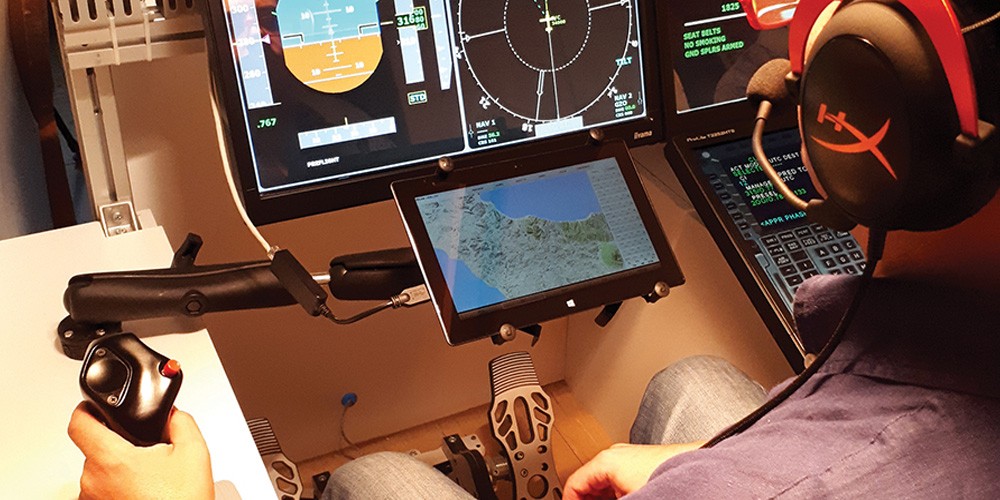How do aerospace research engineers test new cockpit technologies without having to actually fly a plane Answer: flight simulators. These machines give pilots and engineers a safe, controlled environment in which to practise their flying and test out new technologies. In 2016 the team at the Institute of Aerospace Technologies at the University of Malta (IAT) started work on its first-ever flight simulator—SARAH (Simulator for Avionics Research and Aircraft HMI). Its outer shell was already available, having been constructed a few years back by Prof Carmel Pulé. From there, the team built the flight deck hardware and simulation software, and installed all the wiring as well as side sticks, pedals, a Flight Control Unit (FCU) and a central pedestal. The team constructing the simulator faced many hurdles. The biggest challenge was coordinating amongst everyone involved in the build: students, suppliers, and academic and technical staff. Careful planning was crucial.

The result is a simulator representative of an Airbus aircraft. However, it can also be easily reconfigured to simulate other aircraft, making it ideal for research purposes and experimentation. The Instructor Operating Station (IOS) also makes it possible to select a departure airport and change weather conditions.
One of the first uses of SARAH was to conduct research on technology that enables pilots to interact with cockpit automation using touchscreen gestures and voice commands. This research was conducted as part of the TOUCH-FLIGHT 2 research and innovation project (read more about this in Issue 19).
Going beyond the original aim of SARAH being used for research purposes, the IAT is also using the technology to educate graduates and young children in the hope of sparking an interest in the field. Earlier this year, a group of secondary school students flew their own virtual planes under the guidance of a professional airline pilot.
Looking ahead, the IAT plans to incorporate more state-of-the-art equipment into SARAH to increase its capabilities and make the user experience even more realistic. There are also plans to build other simulators—including a full-motion flight simulator and an Air Traffic Control simulator—and to connect them together to simulate more complex scenarios involving pilots and air traffic controllers; a scenario that would more closely resemble the experience of a real airport.Project TOUCH-FLIGHT 2 was financed by the Malta Council for Science & Technology, for and on behalf of the Foundation for Science and Technology, through the FUSION: R&I Technology Development Programme.





Comments are closed for this article!